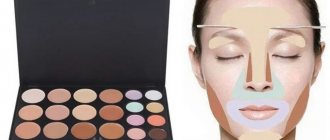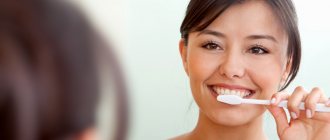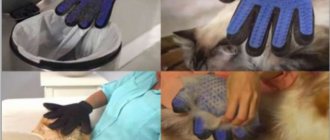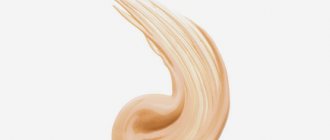In this article
- Classification of toothbrushes
- Classification of electric toothbrushes
- Choosing toothbrush bristles
- Selecting cleaning head parameters
- What influences the location of the fiber bundles?
- How to make the right choice?
The main tool that has allowed us to remove plaque from the surface of our teeth for centuries is the toothbrush. During its existence, this hygiene item has undergone numerous transformations, maintaining its main function - the cleanliness of the oral cavity. We will tell you what modern toothbrushes are like in this article.
Classification of toothbrushes
Today, the toothbrush market offers a huge range of models that differ in design, cleaning technology, material and other parameters. A clear classification helps to understand this diversity.
The most accurate, complete and modern classification is that of Honored Dentist, Doctor of Medical Sciences, Professor of Medical University and Academician of PANI S.B. Ulitovsky.
According to his classification, brushes are:
- children, teenagers and adults;
- hygienic, preventive and additional;
- manual, electrical and mechanical;
- straight and angular, with and without indication;
- artificial and natural bristles;
- one-, two-, three- and multi-level according to the nature of the arrangement of the beams;
- cut, rounded, polished, ground, combined (according to the degree of bristle processing);
- setron, nylon, perlon, derolon, polyurethane, combined - according to the bristle material;
- very soft, soft, medium hard, hard, very hard, mixed and combined - according to the stiffness of the bristles;
- with flat, narrow, thin, round, combined, mixed, hard and springy handles;
- small, medium and large - depending on the size of the handle;
- with corrugated, flat, concave, convex, horizontal, mixed, circular, vertical, universal, special, combined, mixed and without grip.
It can be difficult to understand such diversity without the help of a dentist, so we recommend consulting with your doctor.
How to choose brushes for a child
A children's toothbrush is an important personal hygiene item that needs to be chosen correctly and responsibly. For children 2-3 years old, who have already erupted all or almost all their teeth, brushes with silver ions contained in the bristles are suitable. The main thing is that the baby does not have allergic reactions to metal. The antibacterial properties of silver have long been proven, so this technology is used by large manufacturers.
Toothbrushes for kids have a bright design that helps parents interest their child and involve them in the process of brushing their teeth. The main thing is to present everything in a playful way, turning the hygiene procedure into an exciting game.
From the age of three, children already brush their teeth themselves, and parents only control this process. The brush should have soft bristles with rounded tips, and the head size should be small and cover 2-3 baby teeth. A good choice for this age is considered to be bristles with 3-4 rows.
For children 6-9 years old, brushes of medium hardness are suitable, provided there are no problems with gums and teeth. At this age, children’s movements when brushing their teeth are already clear and practiced, so they may not be controlled. The size of the brush still needs to be chosen according to the size of the teeth so that the head overlaps 2-2.5 adjacent teeth.
Classification of electric toothbrushes
Today, electric toothbrushes are gaining popularity and may soon supplant regular manual ones. Their advantage is the high cleaning efficiency, which is possible thanks to the rapid movements and pulsations of the bristles. It is impossible to achieve this effect manually, so electric brushes are better than conventional ones at removing tartar, plaque, and cleaning hard-to-reach areas.
Electric toothbrushes have a built-in motor and a rechargeable battery or battery that allows them to operate autonomously.
Electric brushes, depending on their design and technology, are divided into three main types:
- Rotary.
- Sound.
- Ultrasonic.
The simplest among electric brushes are rotary ones. Their cleaning head rotates at high speed, providing mechanical removal of plaque and food debris from the surface of the teeth. They are accessible to users of any budget and are easy to use, but at the same time clean teeth better than manual brushes.
An example of high-quality rotational models is the B.Well MED-810 or CS Medica CS-465-M.
The operation of sonic brushes is based on more complex technology. The high-frequency generator creates a sound wave that causes the bristles of the cleaning head to pulsate at a high frequency. Thanks to such pulsations, the sonic brush not only removes plaque well, but also creates fine foam with oxygen bubbles in the mouth. By bursting, they remove contaminants in the most difficult areas of the oral cavity. In addition, the sonic brush gently massages the gums, is suitable for caring for braces, implants, and allows you to carefully clean gum pockets. Here are some great models: Panasonic EW-DL82-W820, CS Medica CS-161.
The ultrasonic model is similar to the sound one, the only difference being that it does not generate audible sound vibrations, but high-frequency ultrasound. It effectively destroys even complex pigmented plaque, penetrates hard-to-reach places, has a healing effect on the gums, and increases their permeability to toothpaste components. Popular models of ultrasonic brushes are Megasonex, Donfeel.
It should be taken into account that electric brushes have a number of contraindications and are not suitable for young children, so it is not recommended to use them without first consulting a dentist.
An important question: how to choose the right toothbrush?
Nowadays it is difficult to imagine life without a toothbrush. By the way, the health and comfort of your teeth and gums depends on the right brush.
Many oral care products existed long before the advent of the toothbrush: bird feathers, animal bones, porcupine quills. But its predecessor is considered to be the so-called “Chewing stick”. It is a twig and has two ends: split and pointed. The first is used as a brush, the second as a toothpick.
The earliest chewing sticks were discovered in Mesopotamia in the 35th century BC. and in Egypt in the 30th century BC. Later they appeared in Ancient China, Greece, Rome, and are still used in Africa, India, and Islamic countries. Also, these hygiene products are very popular among supporters of natural nutrition (vegetarians, vegans).
The first toothbrushes originated in China around the 7th-10th centuries AD. They used bristles made from pig or horse hair as bristles. In the 17th century, thanks to travelers and traders, toothbrushes appeared in Europe. They entered mass production in the 1780s. In 1938, animal bristles were replaced with nylon bristles. And in 1954, the first electric toothbrush was invented by Dr. Phillip-Guy Boor in Switzerland.
There are many types of toothbrushes in the modern world. So how can you choose from all the variety of products the one that is right for you? Let's try to figure it out.
Toothbrushes vary in hardness:
- Hard
- Medium hardness
- Soft
- Extra Soft
If you are the happy owner of strong teeth that are not subject to wear, if you do not have bleeding gums, then a hard brush is suitable for you. However, most residents of our country recommend medium-hard and soft brushes.
The next thing you need to pay attention to is the stubble. There are two types of bristles:
- Natural. Not recommended due to pathogenic microorganisms that accumulate in their pores. In addition, natural bristles have a sharp edge that injures the gums.
- Synthetic. It is preferable because it does not have a porous structure and the edges of the bristles are rounded, which means they are less dangerous.
A regular manual brush consists of a head and a handle. The optimal length of the working part for an adult is 23-30 mm, width 7-11 mm, for children - length 18-25 mm, width 7-9 mm. Many toothbrush models have a power projection for better cleaning of molars and deep penetration into interdental spaces. Bundles of fibers located in an oblique direction remove plaque from the cervical area. Many brush models have an indicator - a series of tufts of fibers colored with food coloring, which discolors over time. If 1/2 of the length of the bristles becomes discolored (usually this occurs after 2-3 months with proper brushing of the teeth), the brush should be replaced.
There are orthodontic brushes designed for oral hygiene in the presence of braces. In these brushes, the inner bristles are shorter, and the edges of the heads are longer. This is necessary for better cleaning of all tooth surfaces. In addition, there are mono-beam (single-beam) brushes for orthodontic patients. They have a single tuft of bristles on a small head. This brush can be used by those who have bridges and crowns. For the same purpose, a dental brush is intended, which is a handle into the locking mount of which a cone-shaped or cylindrical brush is inserted.
Electric toothbrushes have become very popular. The first models only moved forward and backward. Modern ones can make circular, reciprocating and pulsating movements. In addition, electric brushes have different operating modes: “gentle” (for teeth with increased sensitivity), polishing (to add shine and whiten enamel), massage (to improve blood supply to the gums).
Replaceable nozzles are equipped with special multi-colored rings - a different color for each family member. Some models have adjustable pressure on the teeth (to prevent increased wear).
The advantage of electric toothbrushes is that they make 5-30 thousand movements per minute. No manual brush is capable of such speeds. However, using an electric toothbrush is not always possible for everyone. Contraindications may include:
- children under 3 years of age;
- mobility of teeth of the third degree (the tooth is mobile in three directions);
- hypertrophic gingivitis;
- stomatitis;
- recent oral surgery.
In addition to electric toothbrushes, there are ultrasonic brushes. They have a built-in high-frequency generator that emits an ultrasonic vibration wave, causing the bristles on the head of the toothbrush to vibrate at speeds of up to 100 million movements per minute. The ultrasonic wave propagates into hard-to-reach interdental spaces. However, there are contraindications for using such brushes:
- The presence of veneers, crowns, and large fillings, since the ultrasound wave leads to the destruction of the connection between the filling/veneer and the tooth.
- The presence of chalk stains on the enamel.
- Chronic foci of infection at the root tips (cysts, granulomas)
- In case of acute inflammation of the gums (swelling, bleeding, pain), as infection may spread.
- In the first trimester of pregnancy.
- If you have a pacemaker.
- In the presence of neoplasms in the oral cavity.
There is another type of brushes - children's brushes. It is necessary to practice oral hygiene from the moment the first tooth erupts. For this purpose, there are special silicone brushes that fit on your finger. With this brush, the baby's mother or father cleans the surface of his teeth, while simultaneously massaging the gums. Thus, painful teething is alleviated and the first skill of brushing is formed. At the age of one and a half to two years, a child can purchase a brush that resembles an adult one. It is distinguished by very soft bristles (the bristles can be silicone), a small head, and a child-friendly, voluminous handle. But at the same time, the parents themselves brush the baby’s teeth.
Starting from the age of three, a child is able to brush his teeth independently under the supervision of elders, and the brush can be decorated brightly and colorfully so that the brushing process resembles a game. As the child grows older, the shape of the brush also changes. The markings on the case will help you with your choice. The main thing is that the brush is:
- with soft or very soft artificial bristles;
- with rounded edges so as not to injure the child’s gums and cheeks;
- with a small head covering 2-3 teeth.
From three to five years old, it is possible to use a children's electric brush under adult supervision.
So, when choosing a toothbrush, you should pay attention to:
- bristles stiffness;
- brush head size;
- presence of orthopedic/orthodontic structures in the oral cavity;
- oral health;
- own tastes and financial capabilities.
However, no matter how perfect and smart a toothbrush you have, it will not replace professional teeth cleaning. So be sure to visit your dentist twice a year to keep your teeth and gums healthy for the long haul!
Shlyakhtova Natalya Nikolaevna, Dentist-therapist
Choosing toothbrush bristles
The quality, material, length and other characteristics of the bristles of a toothbrush directly determine the effectiveness of oral hygiene.
There is a myth that everything natural is better than artificial. When applied to toothbrush bristles, this is not true. Natural ones have more disadvantages than advantages. They have a porous structure and a median channel in which bacteria accumulate and multiply, and they are also hard and severely scratch the gums. Artificial bristles are smooth, have no pores, dry quickly and are less susceptible to contamination by microorganisms, therefore they are considered safer. Modern materials for toothbrushes are soft and do not damage tooth enamel and gum surfaces when brushing.
The most important characteristic to pay attention to is the stiffness of the bristles. How to choose the right one for yourself?
- Sensitive.
This is a very soft bristle that has the most delicate effect on the oral cavity. This type of toothbrush is recommended for brushing teeth in case of inflammatory periodontal diseases.
- Software
Soft bristles are suitable for cleaning children's teeth, caring for sensitive gums and thin enamel. Dentists often recommend this type of brush for pregnant women and people with diabetes. In these conditions, there is often swelling, soreness of the gums and high vulnerability of the tissues surrounding the tooth, due to hormonal changes.
- Medium.
A medium-hard brush is suitable for the vast majority of people with healthy teeth. It provides a moderately strong effect on teeth and gums, effectively removing plaque without causing pain or discomfort.
- Hard.
The stiff bristles help remove stubborn plaque and are suitable for effective cleaning of removable dentures.
- Extra hard.
Very hard brushes should only be used as prescribed by a dentist, as they increase the risk of injury to the gums and damage to the enamel. This toothbrush is used if you are prone to stone formation.
Many toothbrush manufacturers combine bristles of different hardnesses into one model. For example, the central bristles are made more rigid for high-quality cleaning of chewing surfaces, and the side bristles are made softer for careful removal of dirt along the gum edge.
In addition to the stiffness of the bristles, the degree of processing is important. Most modern brushes have rounded bristles to prevent injury to the gums. Brushes with pointed bristles are less common - they penetrate well into the interdental spaces, but can damage soft tissues.
Soft and not very...
Read more…
As for bristles, today, in addition to nylon, other synthetic materials are used, which allows you to select a brush individually - taking into account the shape of the handle and head and the frequency and stiffness of the fibers, which dentists divide into five degrees. By the way, the degree of hardness is indicated on the packaging, and you need to pay attention to it, especially if you have problems with gums, bleeding and some chronic diseases. So, what types of brushes are there?
✅ Very soft (sensitive) . Recommended for children and people with gum problems.
✅ Soft . Recommended for bleeding gums, as well as for diabetics, pregnant and lactating women.
✅ Medium hardness . Designed for adults with a healthy oral cavity.
Read more…
✅ Hard . Recommended for smokers, coffee lovers and people with increased plaque formation with a healthy oral cavity and strong enamel.
✅ Extra hard brushes (extrahard) . Suitable for people with increased plaque formation and in the presence of orthopedic or orthodontic structures: complete removable dentures, fixed bridges and braces.
In any embodiment, the bristles are collected in tufts, which are located at one, two or three levels parallel or at an angle to each other. Some brushes have bristles of different heights. In this case, each group performs its own functions.
Some people prefer electric toothbrushes. It was first patented in Switzerland in the first half of the fifties. And in 1992, Dr. Robert Bock patented an ultrasonic brush.
Selecting cleaning head parameters
The main functional part of a toothbrush is the head, so you should choose it very carefully. It is believed that models with a small cleaning head are more effective at removing plaque and other contaminants. With their help, you can clean hard-to-reach areas, distant teeth, including wisdom teeth. A large cleaning head is less effective at such tasks because its size makes it difficult to control.
The size of the cleaning head is selected based on the age of the user:
- Children's brushes have an optimal length of the working part of 18-25 mm and a width of 7-9 mm.
- Adults are 25-30 mm long and 7.5-11 mm wide.
When choosing the optimal size of the cleaning head, ensure that it covers a maximum of 2-3 teeth. In addition to length and width, the number of tufts of bristles differs between cleaning heads. In children's models there should be 23, in teenagers - 39-40, in adults - 48-55.
It is better to give preference to round cleaning heads. They are considered safer and more maneuverable. Rectangular heads are more bulky and can damage the oral mucosa, so they should not be chosen for children, and adults should use them with caution.
Dentists recommend changing your toothbrush every 2-3 months, because over time, germs accumulate on it, and wear of the bristles reduces the quality of cleaning by 50%. To remember to change your toothbrush promptly, you can choose a model with an expiration indicator: as it wears, its colored bristles will lose color.
How to choose the right classic brush?
To purchase the most suitable personal care product for daily use, you should pay attention to certain characteristics that play an important role when choosing a device.
Bristle hardness
Stay up to date! Toothbrushes can be divided into five categories based on the degree of bristles stiffness:
- Very soft bristles . Used for children of preschool or primary school age, as well as for adult patients suffering from inflammatory gum diseases.
- Soft bristles. Indicated for pregnancy, diabetes and bleeding gums. Cleaning the oral cavity using a toothbrush with soft bristles should be done using a special technique that eliminates excessive pressure of the villi on the teeth and gums.
- Medium hard bristles. The most popular type, used by more than 70% of the adult population. The device is intended for people who do not have serious disabilities or dental diseases.
- Hard stubble. Recommended for people with strong enamel, coffee lovers, smokers and patients suffering from increased formation of tartar. The bristles clean teeth well and eliminate pigmentation, but are not intended for permanent use.
- Very hard bristles. Most commonly used for cleaning removable orthodontic appliances and fixed bridges. Suitable only for people with good enamel and healthy teeth.
Bristle material
The modern range of accessories for cleaning teeth involves only two types of bristles: natural and synthetic.
Natural bristles are very soft, quickly break off and flake , absorb moisture and retain it for a long time, which is why harmful bacteria multiply.
Such villi can injure the gums and cause the development of an inflammatory process .
You should know! Artificial bristles, in turn, are considered highly durable. It does not accumulate water, dries in just a few minutes, has rounded edges and does not injure the mucous membrane.
Other criteria
You should also take into account such nuances as:
- Levels of bristles. Bunches of villi are arranged in rows and are divided into two types:
- single-level - have the same length and are considered ineffective;
- multi-level – bristles of different lengths that remove plaque from all sides of the tooth.
- Number of rows of bristles . Depending on the number and distribution of beams, products are:
- double-row – for cleaning non-removable elements;
- mono-beam – for cleaning teeth with corrective devices;
- small-beam – for cleaning implants and crowns;
- three-row – for children and adults;
- four-row – for adults.
- Active head size. For high-quality cleaning, the working part of the device should cover 2-3 adjacent teeth. Ideally, the size of the correct head is 25-30 mm, and the width is 7.5-11 mm.
- Head shape. Teeth cleaning devices have many shapes, but the best is considered to be oval.
- Weight. A convenient model cannot be heavy - its optimal weight is from 100 to 200 g.
What influences the location of the fiber bundles?
To care for interdental spaces and clean hard-to-reach areas under braces, a so-called mono-beam brush is used. It has only one bunch of thin, flexible bristles, thanks to which it can penetrate problem areas and perfectly remove plaque.
Most toothbrushes for standard oral care have several dozen tufts, which can be arranged in several rows (usually three or four). More effective cleaning is provided by those models in which the height of the beams in different rows is different. If there are short bristles in the center and long bristles at the edges, then the former perfectly remove plaque in the central grooves of the teeth, and the latter remove plaque from the surfaces of the teeth and interdental spaces. The oblique arrangement of the beams facilitates better penetration of the brush under the periodontal margin and cleansing of the cervical area.
Tips of bristles
Modern models use high-quality nylon fibers, which are carefully polished when cut.
- How to create a portfolio
- What does scabies look like?
- How to make pasta bolognese at home
The tips of the bristles depending on the model:
- Rounded ones are the least likely to cause injury and are suitable for most people.
- Pointed ones – thoroughly clean the teeth and the space between them.
- Blunt - effective for massaging the gums, improving microcirculation of blood in them.
How to make the right choice?
The classification of toothbrushes clearly shows how great their diversity is. To make the right choice for your oral health, you need to know the condition of your teeth and gums. Therefore, it is advisable to discuss the choice of a brush for yourself or your child with your dentist after a thorough examination of the oral cavity. The specialist will recommend which toothbrush model can most effectively solve individual hygiene problems and advise additional oral care products.
You can always purchase a high-quality toothbrush and other oral hygiene products in our online store.
Selection rules
A wide range of oral care products forces the consumer to choose products according to certain selection criteria. What should you pay attention to when choosing?
Cleaning head
The cleaning head should be small and round in shape
.
Choose a head with smooth edges
to avoid injury to the oral cavity. The effectiveness of cleaning hard-to-reach areas depends on the correct size of the cleaning surface.
For children, it is recommended to use a head up to 7 mm wide. For adults, a maximum width of 11 mm is acceptable.
Hardness degree
Manufacturers offer a choice of 5 degrees of bristle hardness, each of which has its own purpose:
- sensitive (0.10 mm) – the softest bristles are created for light intensity cleaning from accumulated bacteria, and are intended mainly for children 2-5 years old and for people with increased tooth sensitivity;
- soft (0.12 mm) – soft-hard bristles affect the oral mucosa and qualitatively polish the enamel without damaging it. Recommended for pregnant women, children 5-10 years of age and people suffering from pathologies of gum tissue or periodontitis;
- medium (0.15 mm) – a medium degree of hardness is suitable for children over 10 years old, people with healthy teeth, as well as those who have superficial carious lesions;
- hard (0.17 mm) – has enhanced cleaning properties, intended for people whose teeth are prone to constant tartar formation;
- extra - hard (more than 0.17 mm) - the most rigid bristles are produced for cleaning removable braces and dentures.
The following video contains information about the advantages of monotuft toothbrushes and the rules for choosing them.
Pen
This part of the brush should be of medium thickness, ergonomic and with silicone inserts to prevent slipping during the procedure.
But the main selection criterion is the neck of the product, which must be curved to ensure a high degree of cleansing of hard-to-reach places in the oral cavity.
Bristle material
Natural and artificial materials are used to make fibers. In the first case, the pile is distinguished by significant softness and elasticity.
However, products with bristles made from natural fibers have some disadvantages:
- high cost;
- Compared to synthetic materials, short service life;
- The bristles quickly accumulate bacteria due to the flat structure of the villi.
Nylon and polyurethane are superior to natural fibers in terms of stiffness and elasticity of the bristles. But bristles made of artificial material quickly lose their shape when exposed to hot water.
For high-quality hygiene, preference should be given to brushes with bristles from 0.17 to 0.2 mm.
Number of villi
When choosing a device for a child, you should give preference to products with 700 fibers, and for an adult – 1,000 or more.











